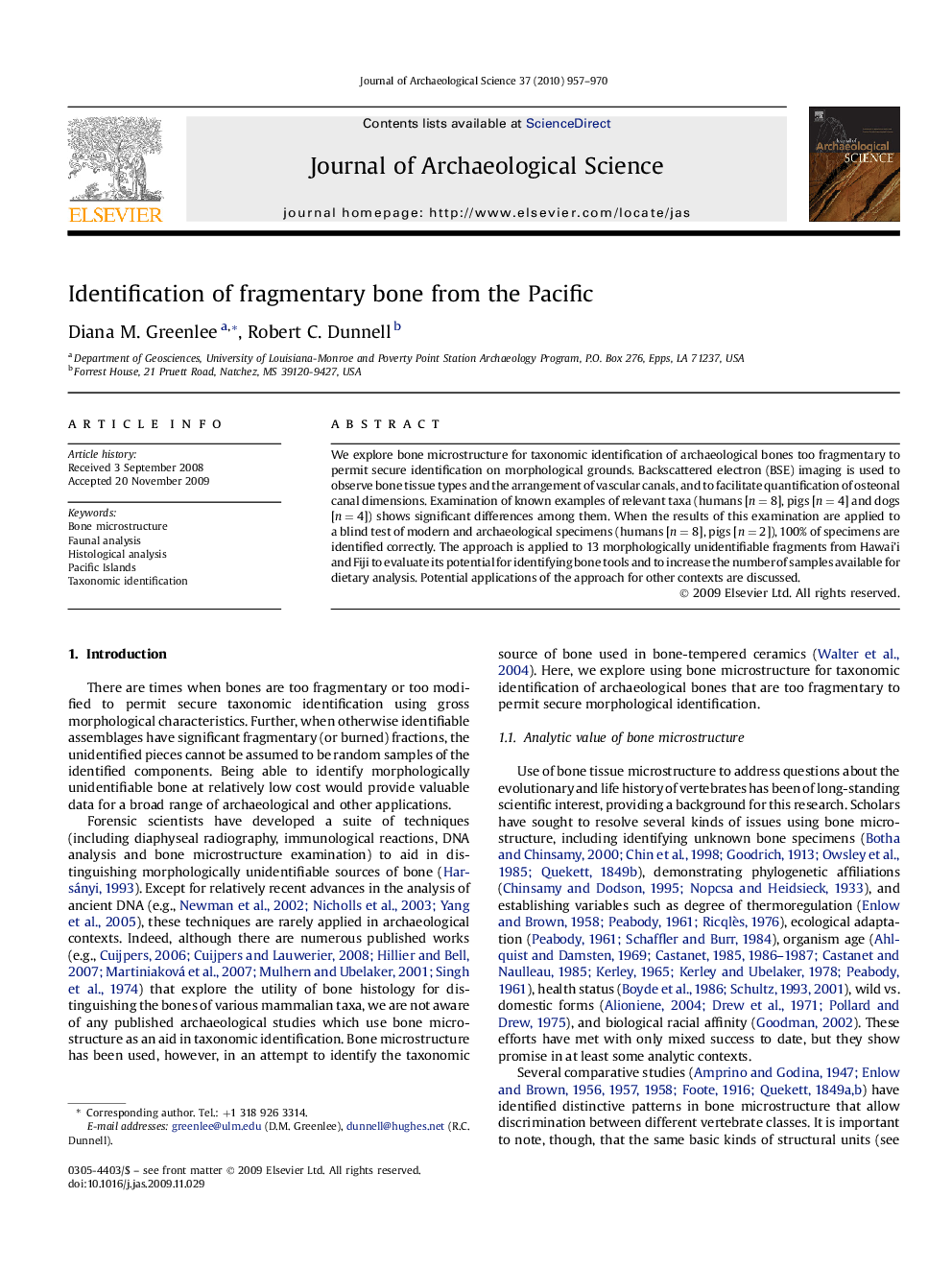| Article ID | Journal | Published Year | Pages | File Type |
|---|---|---|---|---|
| 1036863 | Journal of Archaeological Science | 2010 | 14 Pages |
We explore bone microstructure for taxonomic identification of archaeological bones too fragmentary to permit secure identification on morphological grounds. Backscattered electron (BSE) imaging is used to observe bone tissue types and the arrangement of vascular canals, and to facilitate quantification of osteonal canal dimensions. Examination of known examples of relevant taxa (humans [n = 8], pigs [n = 4] and dogs [n = 4]) shows significant differences among them. When the results of this examination are applied to a blind test of modern and archaeological specimens (humans [n = 8], pigs [n = 2]), 100% of specimens are identified correctly. The approach is applied to 13 morphologically unidentifiable fragments from Hawai’i and Fiji to evaluate its potential for identifying bone tools and to increase the number of samples available for dietary analysis. Potential applications of the approach for other contexts are discussed.
